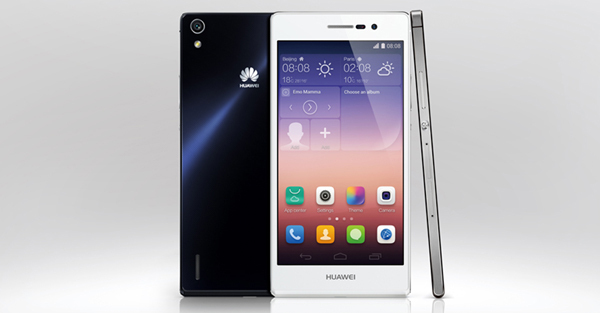 |
|
The Huawei Ascend P7 is the company's newest flagship phone. [Provided to China Daily] |
Phonemaker shows its hardware can rival established competitors. However, the Chinese company will need to overcome its unfamiliar brand with a good price.
It was not so long ago that Samsung was struggling to establish itself. Now it's a pre-eminent brand - it would be wise not to rule out Huawei just because it's virtually unpronounceable and lacks pedigree. The Chinese manufacturer's new flagship, the Ascend P7 brings the Chinese manufacturer closer than ever to rivaling smartphone giants Samsung and Apple.
First impressions of the P7 are good: at 6.5mm it's extremely thin, although not quite as slim as its predecessor, making the five-inch screen somehow seem even larger than it is.
That crisp screen reaches to within three millimetres of the edge of the phone and gives you 1,080 by 1,920 pixels, crammed in at 441ppi for great clarity. Famous last words, perhaps, but it's difficult to see how much denser pixels need to get as the human eye will struggle to spot further improvements.
The overall design is clean, but obviously similar to other smartphones - the monolithic slab of glass, metal and plastic is a ubiquitous aesthetic. Both the front and the back are Gorilla Glass, so should resist scratches, and you get the choice of black and white, or pink. The sides and top of the handset are an aluminium strip, while the plastic bottom edge curves nicely to blend the front and back edges - it also makes it nice and easy to slip into a tight pocket.
Some will miss the solid-feel and cold touch of the aluminium rear on the P6, but the new phone has a slightly-hypnotising swirl pattern buried under the glass that looks fantastic and hides fingerprints well.
At 124g it's extremely light, although the 2500 mAh lithium polymer battery is not massive and will mean that some opt for an external battery pack. We found that it easily coped with a whole day's use, but it is sometimes infuriating that manufacturers insist on placing such a high priority on ever-thinner cases at the expense of battery life. Many would accept a little heft for a device that could survive an overnight stay away from home.
In terms of connectivity, you get 4G LTE - one of the omissions from the P6 - and Huawei claims that a dual-antenna will boost signal reception significantly. We certainly had no drop-outs, but have not yet left well-connected London with it.
You get two SIM slots, one of which cleverly doubles up as a microSD card slot, handy for those who travel so regularly that they have a dedicated SIM for use in another country.
Among the best features are the cameras. On the back you get a 13 megapixel sensor which has performed well - taking the edge, slightly, compared to an iPhone 5c. The lens is perilously close to the edge of the case, though, so watch those fingers when pressing the shutter.
On the front you get an unusually high-quality eight mega pixel camera, a nod to the rising popularity of "selfies" shot using the screen as a viewfinder. The software also has a clever concession to the craze by including a small preview viewfinder superimposed on the main one. That seems pointless, until you realise that if you look at the small preview in the top-right of the screen your eyes appear to be looking at the lens in pictures, rather than slightly off to the side. A small feature, but a thoughtful one.
Another clever feature is the "groufie" option - Huawei have attempted to register that as a trademark, as if anyone would want to copy it - that allows you to take panoramic images with the front camera. Because photos of groups tend to block out the scenery, this feature helps keep group selfies in context by capturing some landscape to the left and right of the image by tilting the phone side-to-side and stitching three images together.
Not all of the smartphone is as well considered, such as the Emotion UI which sits atop Android. The stock Google OS would have been a simpler, cleaner and cheaper option.
With the P7 Huawei have proved that it can create high-end smartphones, but it is yet to prove that it can use them to steal market share from more established competitors. Exact UK costs are yet to be revealed, but with a recommended price of 449, it seems likely that it will significantly undercut the competition. That could prove to be the strategy that ensures that when the Ascend P8, P9 and P10 launch at some point in the future, they are met with progressively less scepticism and more anticipation.
